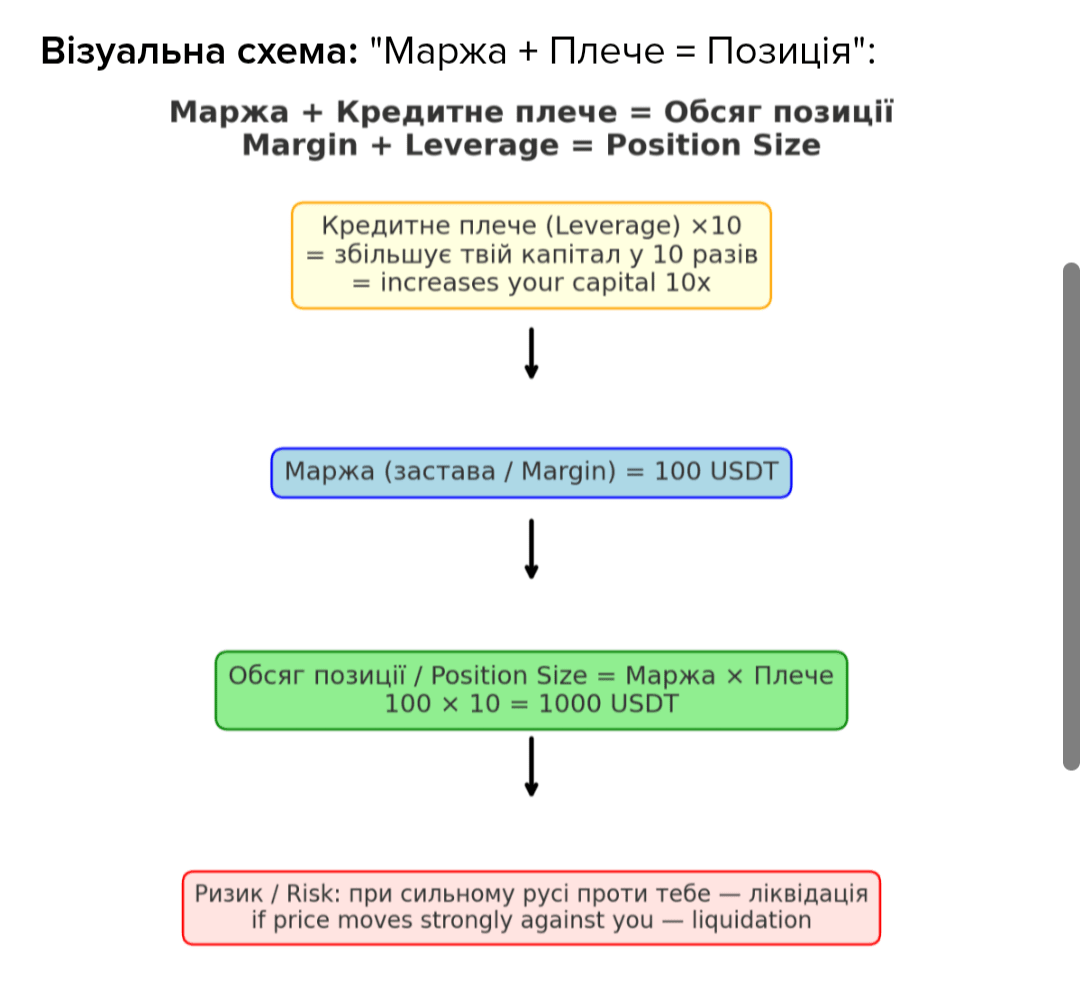Before talking about margin, it is worth understanding what #кредитне_плече (#Leverage ) is — this is a multiplier that allows you to manage a position that significantly exceeds your own funds. For example, leverage ×10 allows you to control a deal 10 times larger than your capital.
#Маржа — this is the collateral you deposit to open a position with this leverage on the exchange.
This is not a fee from the exchange, but your own contribution that guarantees coverage of possible losses.
"Profit value" of the term
Margin is proportionally multiplied by leverage to form the total volume of your position.
Formula:
Position volume = Margin × Leverage
For example:
You deposited 100 USDT margin
Chose leverage ×10
Position volume: 100 × 10 = 1,000 USDT
Which concepts correlate with:
Leverage — a multiplier that increases trading volume.
Initial margin — the amount you deposit when opening a position.
Maintenance margin — the minimum balance required to maintain a position.
Liquidation price — the level at which the exchange will close the deal.
Margin call — a signal that additional funds need to be deposited.
Differentiation of the concept
Isolated margin — the risk is limited only to the amount deposited for a specific position.
Cross margin — the entire free balance in the account is used to cover losses.
Simple explanation
Imagine you are buying an apartment worth 100 thousand dollars, having only 10 thousand — the rest is provided by the bank.
Margin is your 10 thousand (collateral), leverage is how many times the bank increased your purchasing power.
In the crypto market, the difference is that if the market goes against you — the exchange will take the position instantly to prevent losses beyond your margin.
Visual scheme: "Margin + Leverage = Position", to see how it works step by step. (Especially good for understanding risk) $BNB $SOL
